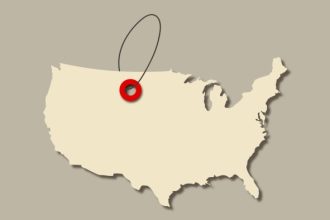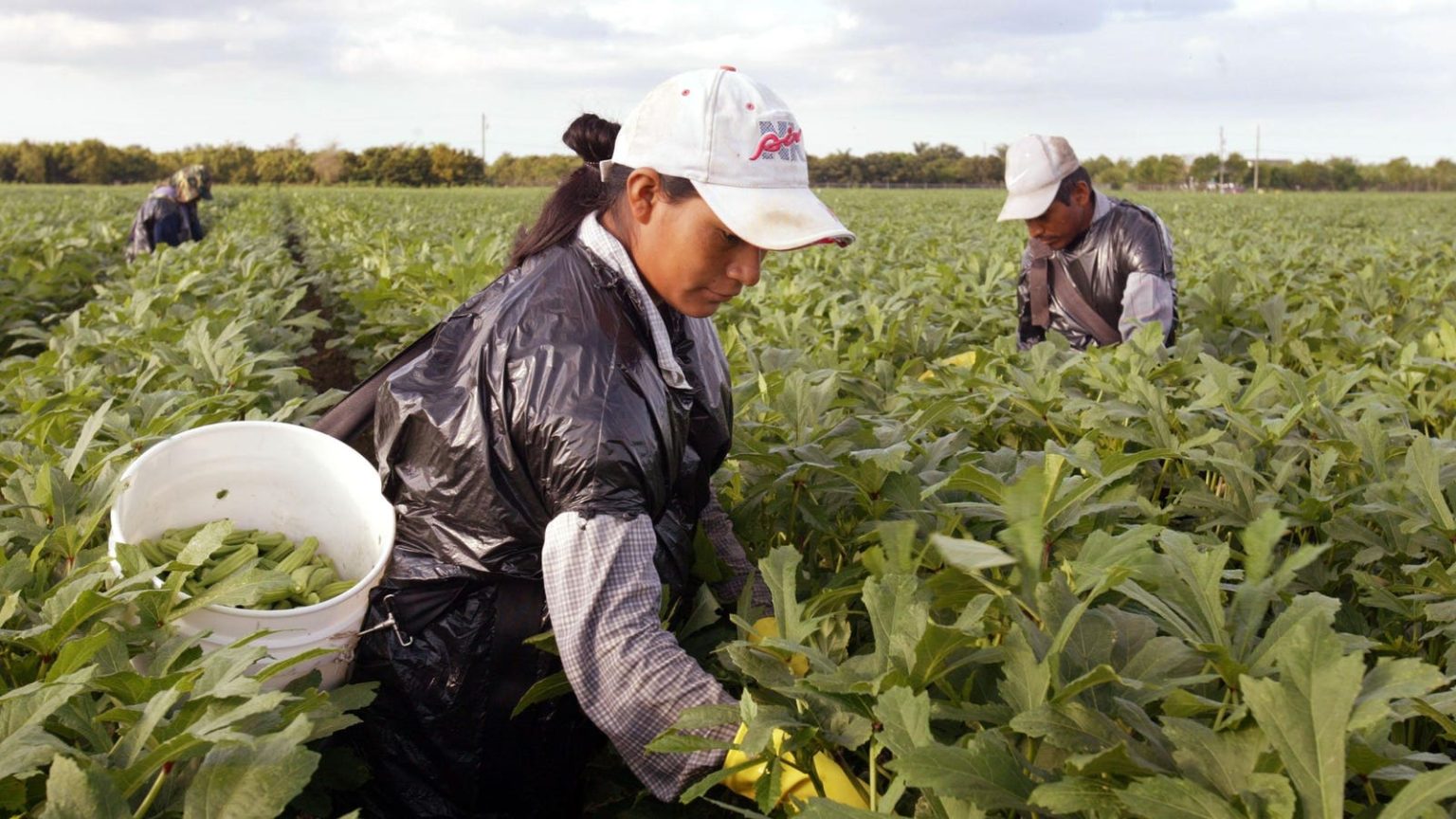In the predawn hours of a January morning, the 1691 farms of Kern County, California, should have been alive with movement. But on this day, the fields were eerily quiet. News of ‘Operation Return To Sender’— federal agents implementing Trump immigration orders in unmarked SUVs, detaining unsuspecting farm workers the day before— spread quickly, leaving behind an abandoned harvest and a community in angst.
As the Trump administration ramps up immigration enforcement, the undocumented farmworkers who sustain the $1.53 trillion U.S. agricultural industry— comprising 42% to 50% of the workforce— are living in heightened fear of deportation.
“We’re hitting every sanctuary city right now,” said Tom Homan, Trump’s “border czar” on January 23, referencing cities such as Los Angeles, San Francico, Portland, Houston and Chicago that limit cooperation with U.S. Immigration and Customs Enforcement (ICE).
Farmers and industry specialists fear that stricter deportation policies could lead to severe labor shortages, disrupting food production and driving up consumer prices.
A February 10th research note from Goldman Sachs cautioned that agriculture would be among the industries most vulnerable to President Trump’s immigration crackdown, which aims to ramp up deportations to approximately 500,000 per year. The American Immigration Council estimates that mass deportation could displace approximately 224,700 farmworkers.
“The key risk is probably not a scenario in which annual deportations reach into the millions, but one where an immigration crackdown creates a climate where employers are afraid to employ unauthorized immigrants or unauthorized immigrants are afraid to go to work, potentially leading many to stay out of the workforce or even to leave the U.S. on their own,” says Goldman Sachs’ Chief Economist, Jan Hatzius.
The consequences of this enforcement wave extend far beyond the farms. California supplies a quarter of the nation’s food, producing a third of the country’s vegetables and three-quarters of its fruits and nuts. If the state’s workforce collapses, American consumers will feel the sting— not just in empty grocery shelves, but in rising food prices. A study from the Peterson Institute for International Economics predicts that large-scale farm labor deportation could drive up food costs by as much as 10%.
The tremors of Trump’s agenda have already been felt.
In Kern County, farm workers have been faced with the impossible decision of whether to stay at home and miss pay or return to work and potentially be deported, following last month’s ambush. The raids allegedly targeted field workers who were “on their way to and from work, in parking lots and at shopping centers,” according to a February report from Kern Valley Public Radio, and resulted in the deportation of a handful of Mexican farmers.
“Despite Border Patrol’s demonstrably false claim that this raid was targeting criminals, we believe that this operation went far beyond that,” said Areli Arteaga, Political Director at the United Farm Workers Foundation— the largest union representing America’s farmworkers. “This is the heartbreaking reality of mass deportation threats that have already emboldened individuals to sow devastation in our communities amongst the very hardworking immigrant workers who harvest all our food.”
The targeting of undocumented migrant farm workers has been likened to “pulling the foundation out from under a house.” Past cases have already demonstrated the supply risks of such policies. When Georgia implemented House Bill 87 in 2011, the state faced a shortage of over 5,000 farm workers, leading to $140 million in crop losses due to unharvested produce.
“Without these employees, crops would go unharvested, rural businesses would suffer, and food prices could rise for families across the country,” says Bryan Little, senior director of policy advocacy at the California Farm Bureau. “This is not just a farm issue— it’s a food security issue, an economic issue, and a community issue.” Bipartisan advocacy group, FWD.us, warns that the loss of foreign-born workers could reduce agricultural output by $30 to $60 billion.
As Trump moves forward with what could be the most aggressive deportation initiative in U.S. history, one question remains: Who will replace the undocumented laborers in America’s fields? In sectors like agriculture, undocumented farm workers have assumed the backbreaking jobs that others won’t take, making up for the production shortfall caused by labor shortages.
“The economy is not a zero-sum game,” says Chloe East, an immigration policy economist at the University of Colorado Denver. “When one person has a job, that does not mean one less job for somebody else.”
Farmers across the U.S. have long struggled to attract and retain workers, and the reasons are clear. Agricultural labor is among the most grueling and physically demanding jobs in the country, requiring long hours in extreme weather conditions. Yet, despite their essential role in food production, many farmworkers endure low wages, minimal labor protections, and harsh working conditions.
Even amid persistent labor shortages, wages for farmworkers often hover at or below minimum wage, forcing them to work excessive hours— sometimes exceeding 70 hours per week— just to make ends meet. To make matters worse, they are frequently denied the right to organize, leaving them with little power to advocate for fair pay and better conditions. Unlike most other workers in the U.S., many farm laborers continue to lack basic workplace protections.
The vast majority of farmworkers— three out of four— are immigrants, primarily from Mexico and Central America, and many live in underserved communities, making them particularly vulnerable to exploitation. On top of these challenges, farmworkers are among the most exposed to the impacts of climate change, facing extreme heat, powerful storms, and other climate-related hazards that threaten their health and livelihoods. The average agricultural worker endures at least 21 unsafe heat days each summer, yet just over half have health insurance.
For years, labor shortages have been the most pressing challenge in the agriculture sector, according to the American Farm Bureau Federation— with an estimated 41% shortfall between 2014 and 2022. This workforce gap, as reported by New American Economy, led to an annual loss of $3.1 billion in fresh fruit and vegetable production during that period.
“If we don’t have people willing to do this work, we will have no crops,” says Jose Ramirez, owner of El Paraiso Orchard in Oregon. “People don’t understand how much of our food system is held together by these workers.”
The fate of U.S. agriculture hinges on a long-overdue policy reckoning. Without a pathway to legal status for undocumented farmworkers, and without reforms to seasonal worker programs, the labor crisis will only deepen.
“It’s not easy to live in fear, when we are the ones putting food on your table,” said California farmworker Xochilt Nuñez in an interview with ABC News in Spanish. “Since the beginning I’ve said, do not bite the hand that feeds you.”
For now, fear continues to sweep across America’s farmlands. In places like Ventura County— where up to 80% of farmworkers are undocumented or have undocumented family members— the uncertainty of a shrinking labor force weighs heavily on both workers and farm leaders.
“Farm employees are not just workers— they are partners in this industry,” says Little. “They are people with families, dreams, and an incredible work ethic that keeps food on tables across America.”
The reality is clear: farmworkers are indispensable. Yet, as Trump immigration policies tighten and anxiety spreads, the future of U.S. agriculture remains uncertain. If those who harvest the nation’s food are driven away, the question is not just who will take their place— but whether America’s food system can withstand the loss.
Read the full article here





